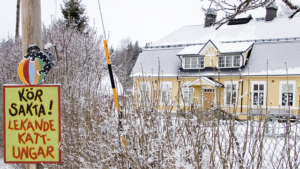8 Facts about Education in Sweden

The Swedish education system is ranked among the best in the world. With its emphasis on individual learning and the personal liberty to enroll children in a diverse selection of schools, many perceive Sweden as a country with a phenomenal educational infrastructure. However, Sweden still trails behind other Nordic countries, such as Finland and Norway, in global education rankings. These eight facts about education in Sweden provide an insight into the successes and shortcomings of a unique approach to maximizing the potential of Swedish youth.
8 Facts About Education in Sweden
- The Swedish educational system is decentralized. The federal government grants localities autonomy in designing the course curriculum. However, the federal government sets standardized goals and objectives for Swedish localities to follow.
- Education in Sweden is divided into four levels of schooling. Children may attend an optional preschool program (förskola) from 1-5 years of age. Children are then offered a place in kindergarten (förskoleklass) when they turn six years old. Following kindergarten is compulsory schooling, which is divided into three levels. Elementary school (lågstadiet) comprises the first three years of compulsory school, then middle school (mellanstadiet) for years 4-6 and finally junior high school (högstadiet) for years 7-9. After compulsory school, Swedish students may attend an optional senior high school (gymnasium) for three years.
- Following an amendment to the law in the 1990s, the Swedish government permitted the development of publicly-funded charter schools (friskola) which act independently of the municipality. These schools are defined by an individualized approach to learning, an open-classroom layout, no uniform policy and unconventional teaching methods. Independent schooling is popular in Sweden; in 2010, approximately 12 percent of compulsory school students and 24 percent of senior high school students attended either tuition-based private schools or charter schools.
- Sweden has a Sami population of 20,000-35,000 people. The Sami people are indigenous to Northern Sweden and other Nordic countries and specialize in the production of reindeer meat. Along with preserving their right to the development of the Sami language, traditions and crafts, the Swedish government allows Sami children to attend specialized Sami schools (Sameskolan) during the years of Swedish compulsory school.
- Play and recess compose an integral part of the early years of education in Sweden. In accordance with the goals of the government, pre-school teachers incorporate the domains of STEM into the classroom curriculum by having the children participate in communal exercises rather than teaching the subjects at the chalkboard.
- The Swedish government has been working hard to compete with the educational systems of other European countries. In 2014, Sweden invested a larger share of its GDP on education (6.8 percent) compared to other member countries of the OECD (5.6 percent).
- As part of a new curriculum made for all Swedish schools, including Sami language schools, special schools and upper secondary schools, the grading system changed to the A-F scale that is commonly used in the United States. Prior to 2011, the Swedish grading system had four grades ranging from Pass with Special Distinction (MVG) down to Did Not Pass (IG).
- According to the World Population Review, Sweden ranks tenth in the world in education, trailing behind its Nordic neighbors, Finland and Norway. Sweden’s top university, the Karolinska Institute, is ranked 40th in the world.
– Grayson Cox
Photo: Flickr
